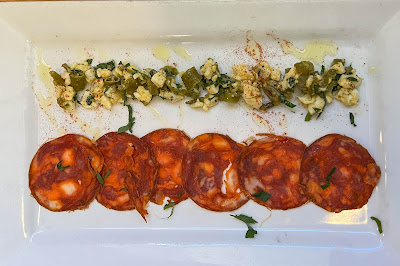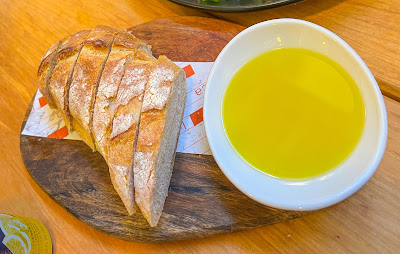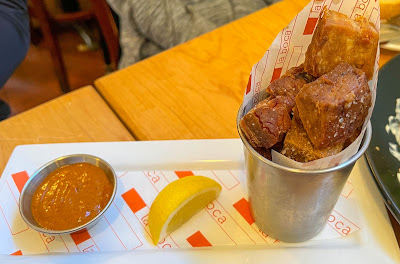We've had lots of Cooper's hawks around our home, including nesting Cooper's hawks in our neighbor's yard and a Cooper's hawk nest that I found in our nearby canyon years ago where I encountered young fuzz-ball chicks and fledglings just learning to fly.
However, the Cooper's hawk looks a lot like the sharp-shinned hawk and I've had a couple of occasions where I thought I saw a sharp-shinned hawk and it turned out to be a Cooper's hawk and vice-versa, including just recently. I'm having a very difficult time differentiating them.
In August 1996 I photographed what I thought was a sharp-shinned hawk in Henry's Fork in northern Utah. I submitted the photo to iNaturalist in 2020 as a sharp-shinned hawk and got two responses that it was an accipiter and most likely a Cooper's hawk. See below.
Very recently, on December 10, 2022 I photographed a hawk at Mojave Narrows Regional Park and the scan on iNaturalist suggested a sharp-shinned hawk and I submitted that, thinking it was likely a Cooper's hawk, but worth a try. See below.
To my great surprise I got four responses all indicating it was a sharp-shinned hawk, including one by the top identifier of sharp-shinned hawks on iNaturalist and one by the fifth highest identifier. I was ecstatic, my first confirmed sighting of a sharp-shinned hawk.
A week later I went back to Mojave Narrows and saw what I thought was the same sharp-shinned hawk, perhaps in the same tree, or very close to it. I submitted it to iNaturalist and the scan suggested a sharp-shinned hawk. I submitted that pretty confidently. To my surprise, I got four responses all saying it was a Cooper's hawk, including by the top identifier of Cooper's hawks and two of the other top identifiers, including one that had identified what I thought was the same bird the week before as a sharp-shinned hawk. Those photos are below.
So what are the secrets to identification? All About Birds notes that a Cooper's has a rather square head with a dark cap, while the sharp-shinned has a rounder head and no cap. Both of the above appear to have a dark cap to me (although the sharp-shinned is less pronounced) and both appear to have rounded heads, particularly the first photo of the Cooper's above. These two characteristic do not seem very reliable to me.
The third characteristic is that the Cooper's tail-end is rounded while the sharp-shinned is more square. One of my photos (the sharp-shinned) is from behind and the other (Cooper's) is from the front and looks more layered, but if I saw it from the back I wouldn't see that layering and I'm not sure it would look different.
Audubon says they look almost exactly alike and differentiating is a "tough one." It notes that the Cooper's is about six inches taller than a sharp-shinned, which is very difficult when they're not standing right next to each other. It says to look at the nape (back) of the neck. The nape of the Cooper's is lighter than the feathers on the top of the head, giving it a capped appearance. Adult sharp-shined have a blue-gray appearance on both, which I can see in my photos, but it is much better to say it that way than that one has a dark cap and the other does not. Audubon says that the rounded verses flat tail can be tough to determine.
After going through this exercise I think I've come away with the idea that the color of the nape differing from the cap maybe the best way to differentiate the two if they are perched. I hope I get some more opportunities to see sharp-shinned hawks and test these identifying characteristics out.




















































